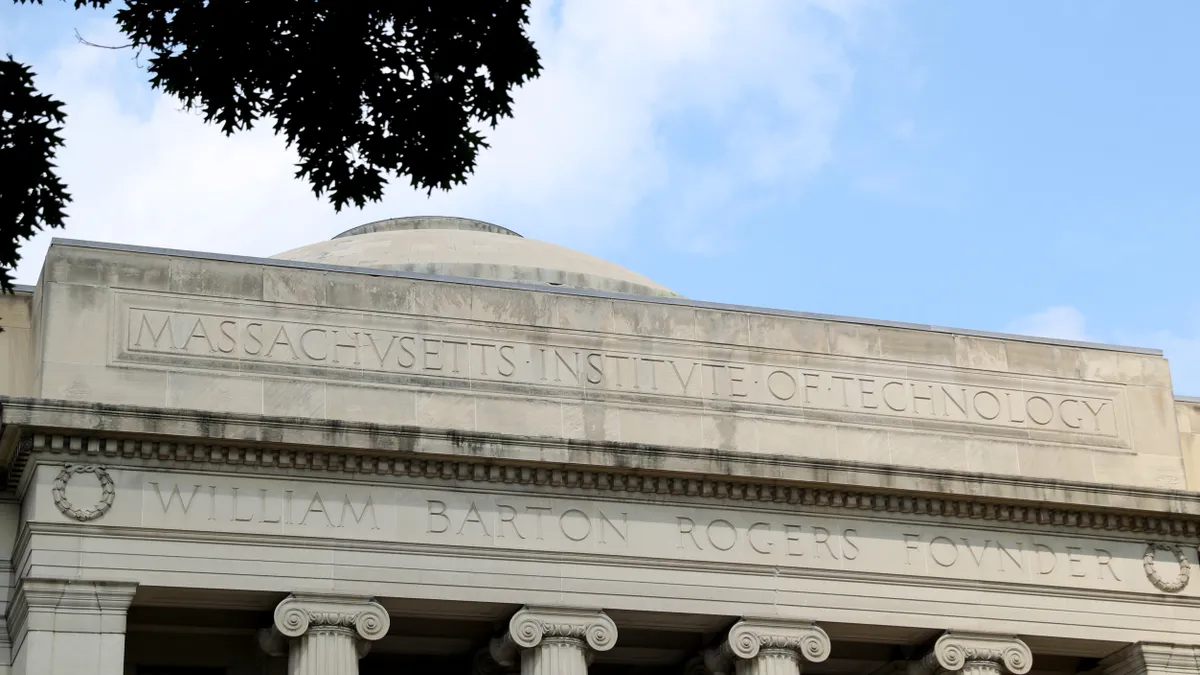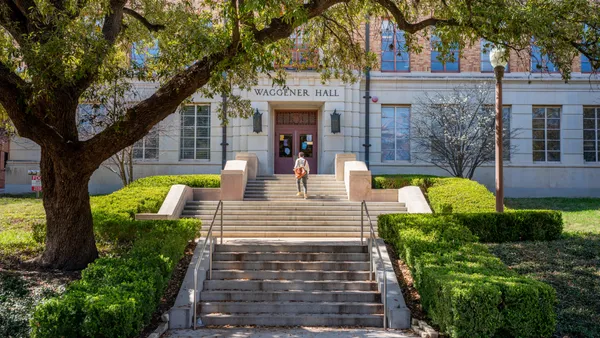Nicole Barbaro is a researcher and senior communications content manager at WGU Labs, an affiliate of Western Governors University that seeks to accelerate the pace of innovation in education. She is also an adjunct instructor of psychology at Utah Valley University.
Online learning isn't going anywhere. After the pandemic caused it to surge during 2020, 59% of surveyed institutions plan on keeping some or all of their new online learning options. But for online learning to be fully successful, leaders must also consider what is lost when students are no longer on campus.
As a researcher and professor, I've seen firsthand how online learning opens up pathways to opportunities for today's modern student. Students can now complete their education from anywhere in the world, on their own schedule. Particularly for those juggling multiple obligations and for those who live far from a physical campus, access to online learning can be transformative.
But online learning often comes with a trade-off: a lack of organic, spontaneous connections with peers that foster a sense of belonging. Higher ed's rapid shift to online learning has largely neglected to account for this, likely contributing to reports of reduced retention and widespread disengagement. Until institutions offering online learning adequately address this challenge, enrollment and student satisfaction rates will continue to suffer.
Student belonging matters
Compared with in-person classes, online classes require more intentional preparation of course content and thoughtful use of education technology tools. But what students gain from increased intentionality, they miss in organic connections and serendipitous conversation. Gone are the days of sharing notes in class, tapping a neighbor to see if they caught that last slide or small talk in the student union.
It's easy to discount the importance of social connections given that millions of students learn independently every single day. But research supports the importance of belonging for students' outcomes.
Studies show that improving belonging for college students consistently yields positive effects across diverse settings and students. For example, students at a broad-access university who took part in a belonging intervention had greater academic persistence over two years. Other studies highlight the potential for long-term positive effects up to a decade later.
Students are expressing concern about the relative lack of social engagement and belonging afforded by online learning: 71% of students reported that the lack of connection with peers and faculty is a challenge posed by online learning.
What institutions can do
Confronted by concerns about student disengagement online, many colleges and universities are working to develop initiatives that foster belonging for their students. The College Innovation Network at WGU Labs, CIN, is a network of 10 institutions leveraging technology to build learning communities where students belong. It sought to understand how intentionally designing a virtual community platform could affect online students' experiences.
CIN evaluated how Rio Salado College, a primarily online institution, partnered with an ed tech startup to create a customized virtual platform for its 7,100 online students. The social platform, called RioConnect, was designed to provide students with a virtual place to ask questions, share resources and provide support. CIN recently published the findings in a report partially funded by the Charles Koch Foundation.
During a six-week study, we compared the sense of belonging among students who began participating in RioConnect soon after launch with belonging among students who either joined later or never at all. We tracked changes between two points in timefor more than 200 students.
We found that students who engaged with the RioConnect platform reported greater belonging and peer connectedness than students who never joined. And students who joined RioConnect in the middle of the study had significant increases in belonging after they began using it.
The virtual community's effect on online student belonging offers several applicable lessons for other institutions striving to engage online students.
1. Student belonging is an ongoing process.
Because the goal of building virtual communities for students is to create a space for students, the college recruited student leaders to help in the design process. By leveraging a highly customizable virtual community platform, student designers built a virtual space tailored to their unique needs.
But students' needs are constantly evolving, so the institutions and platforms that support them must evolve, too. Having dedicated staff, especially a project manager, to oversee and manage the implementation, building, maintenance and evolution of a virtual community is a must.
2. Don't skimp on good UX.
Students spend a lot of time online, and they expect and want good user experience, or UX. Part of what made RioConnect successful was the platform's ease of use — in fact, the UX was the second-most mentioned "like" reported by users, behind the benefit of connecting with their peers.
3. Get the word out to students about opportunities.
Building authentic communities can take time, and students can't participate if they don't know that the community exists. To ensure students knew about RioConnect, Rio Salado College created dedicated email campaigns to advertise the platform directly to students. Most impactfully, they auto-enrolled students into the platform to reduce access barriers to joining.
What it means
The need for institutions offering online learning to take seriously the role of belonging in student success is one that will only continue to grow. Even before the pandemic, 18% of all postsecondary students were taking their courses fully online, and 38% were taking at least one course online.
An encouraging finding of this CIN study is that students don't need to choose between the flexibility online learning offers and the social connections they yearn for. Institutions can — and should — thoughtfully design virtual spaces where students can engage with others and truly feel part of a learning community.













